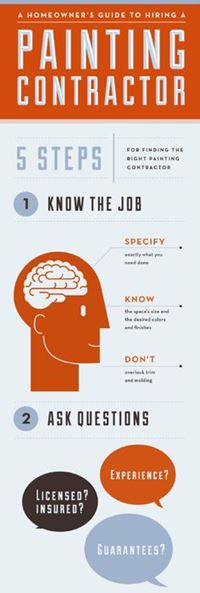Seasonal Consider Commercial Outside Paint: Trick Insights You Need To Know
Seasonal Consider Commercial Outside Paint: Trick Insights You Need To Know
Blog Article
Produced By-Fox Skafte
When you're preparing an industrial external painting job, seasonal factors can make or damage your results. You'll want to consider how temperature and moisture impact paint application and drying out times. Selecting the right period can ensure your paint sticks appropriately and lasts longer. But which Continue Reading are truly the best for this kind of work? Let's discover the key elements that can influence your job's success.
The Impact of Temperature on Paint Application
When you're preparing a business outside paint task, the temperature level can significantly influence exactly how well the paint adheres and dries.
Ideally, you intend to repaint when temperatures vary between 50 ° F and 85 ° F. If it's also cool, the paint might not heal properly, causing issues like peeling off or cracking.
On the other side, if it's too warm, the paint can dry too rapidly, preventing proper adhesion and resulting in an unequal coating.
You ought to also consider the time of day; early morning or late afternoon uses cooler temperature levels, which can be extra positive.
Constantly inspect the manufacturer's recommendations for the particular paint you're making use of, as they commonly give advice on the suitable temperature range for optimal outcomes.
Humidity and Its Result on Drying Times
Temperature isn't the only environmental element that affects your commercial exterior painting project; moisture plays a substantial function as well. High humidity degrees can slow down drying times substantially, impacting the overall quality of your paint job.
When the air is filled with wetness, the paint takes longer to treat, which can cause problems like inadequate adhesion and a higher threat of mildew growth. If you're painting on an especially moist day, be gotten ready for prolonged wait times between layers.
It's crucial to keep track of local climate condition and plan appropriately. Preferably, aim for humidity degrees in between 40% and 70% for optimum drying out.
Maintaining these consider mind ensures your task remains on track and provides an enduring finish.
Best Seasons for Commercial Exterior Painting Projects
What's the best time of year for your commercial exterior paint jobs?
Spring and very early autumn are typically your best choices. During these periods, temperature levels are moderate, and humidity levels are often lower, creating perfect problems for paint application and drying.
Prevent summer season's intense heat, which can cause paint to dry too quickly, causing poor adhesion and surface. Likewise, wintertime's chilly temperature levels can impede appropriate drying out and healing, running the risk of the durability of your paint task.
Go for days with temperatures in between 50 ° F and 85 ° F for optimal results. painting ceilings and walls the same color in mind to inspect the regional weather prediction for rainfall, as damp problems can destroy your job.
Preparation around these elements guarantees your painting project runs efficiently and lasts longer.
Verdict
In conclusion, preparing your business external paint jobs around seasonal factors to consider can make a considerable difference in the result. By scheduling job throughout the excellent temperatures and humidity degrees, you'll make certain much better adhesion and drying out times. Remember to watch on local weather forecasts and select the correct time of year-- springtime and early autumn are your best bets. Taking these steps will certainly help you accomplish a durable and professional coating that lasts.
